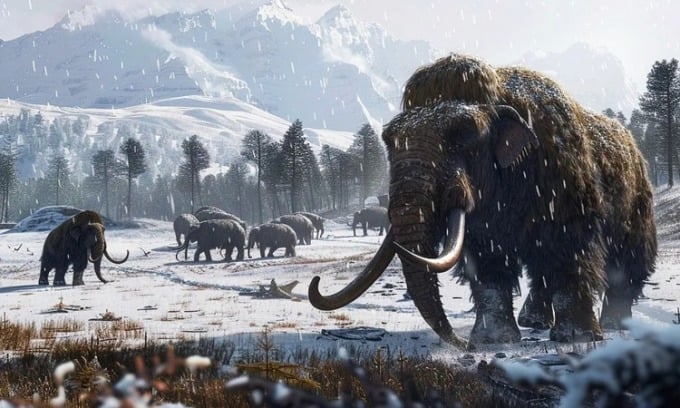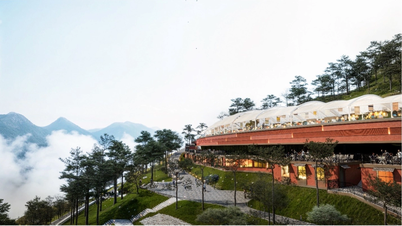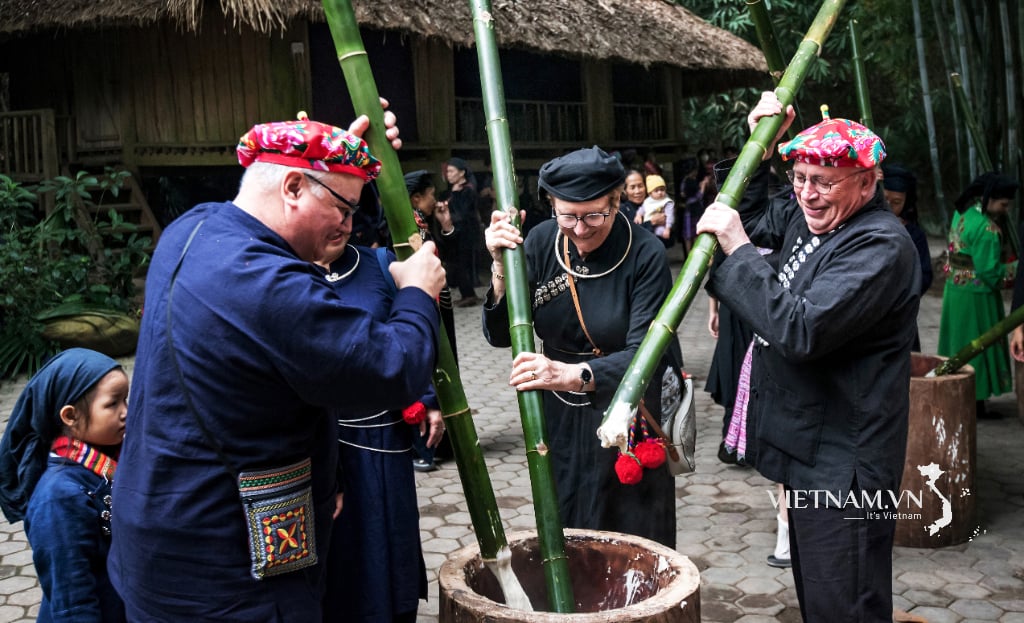A team of scientists at Colossal Biosciences has obtained induced pluripotent stem cells from elephants, making it easier to revive extinct mammoths.

Woolly mammoths possessed many adaptations to the polar climate. Photo: Wired
Scientists have made a breakthrough in elephant stem cells, bringing them one step closer to reviving the long-extinct woolly mammoth, according to biotechnology company Colossal Biosciences. The company's research team said they successfully extracted induced pluripotent stem cells (iPSCs) from the Asian elephant ( Elephas maximus ). iPSCs are cells that have been reprogrammed to generate any type of cell in the body, meaning researchers can study the adaptive traits that made woolly mammoths ( Mammuthus primigenius ) different from their closest living relatives, and then attempt gene editing without needing tissue from living animals.
"These cells offer significant benefits to the work of reviving the species," said Eriona Hysolli, director of biology at Colossal Biosciences. According to Hysolli, it is essential that iPSCs can reveal the cellular and genetic processes behind the traits that helped woolly mammoths thrive in the Arctic, including their thick fur, curved tusks, fat reserves, and dome-shaped skulls. iPSCs also pave the way for creating elephant egg and sperm cells, which are crucial for reviving mammoths in the laboratory. With fewer than 52,000 Asian elephants remaining in the wild, according to the WWF, collecting cells from living individuals is extremely difficult.
Previously, extracting iPSCs from elephants was a major challenge because these animals have a complex genome not found in other species. Researchers overcame this obstacle by inhibiting a key gene called TP53, which is responsible for coordinating cell growth and preventing cells from replicating endlessly.
This breakthrough could shed light on early elephant development, currently the biggest obstacle to reviving the woolly mammoth. If the research team successfully creates a woolly mammoth embryo by combining ancient mammoth DNA with elephant cells, they will need to implant the embryo into a surrogate elephant to complete the 22-month pregnancy. "Elephant pregnancies are so long and complex, so understanding the biological development characteristics of elephants is crucial," Hysolli said.
Editing woolly mammoth embryos is no longer a major challenge, but producing healthy offspring requires considerable time and effort. Hysolli's team is still researching alternative methods to create elephant iPSCs and nurture the newly developed cells. Reprogramming elephant cells into iPSCs has many applications beyond reviving woolly mammoths. The technology could advance elephant conservation by allowing researchers to produce and artificially inseminate reproductive cells.
An Khang (According to Live Science )
Source link


![[Photo] Prime Minister Pham Minh Chinh attends the Conference on the Implementation of Tasks for 2026 of Vietnam Television.](/_next/image?url=https%3A%2F%2Fvphoto.vietnam.vn%2Fthumb%2F1200x675%2Fvietnam%2Fresource%2FIMAGE%2F2026%2F01%2F10%2F1768047311329_ndo_br_dsc-3214-jpg.webp&w=3840&q=75)














































![[Infographics] Resolution No. 79-NQ/TW of the Politburo on the development of the state-owned economy](https://vphoto.vietnam.vn/thumb/402x226/vietnam/resource/IMAGE/2026/01/10/1768038914679_chp_3-11-23.jpeg)





















































Comment (0)